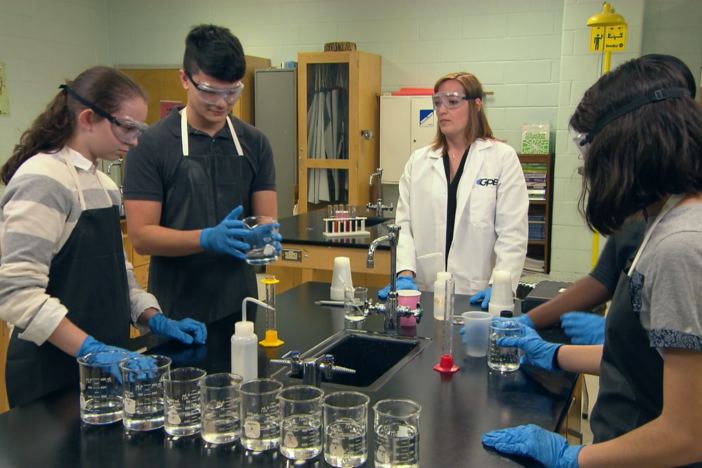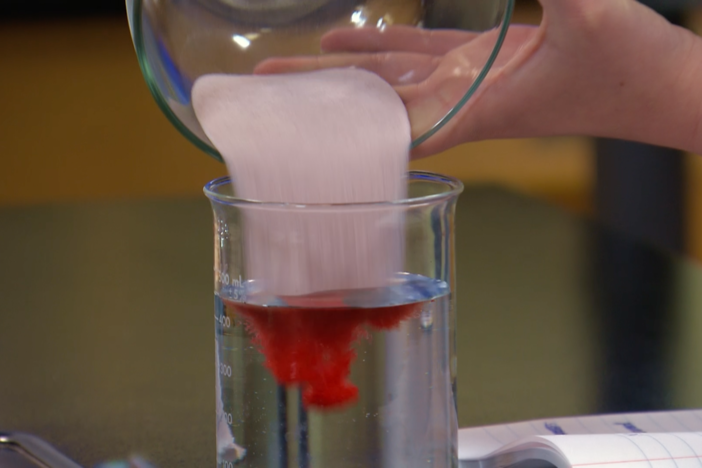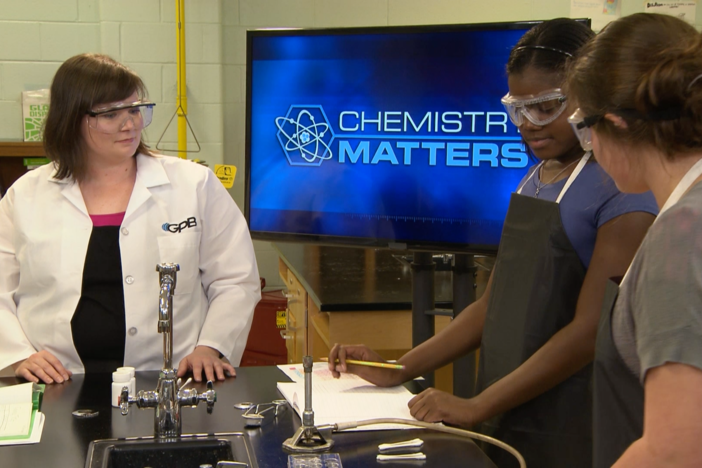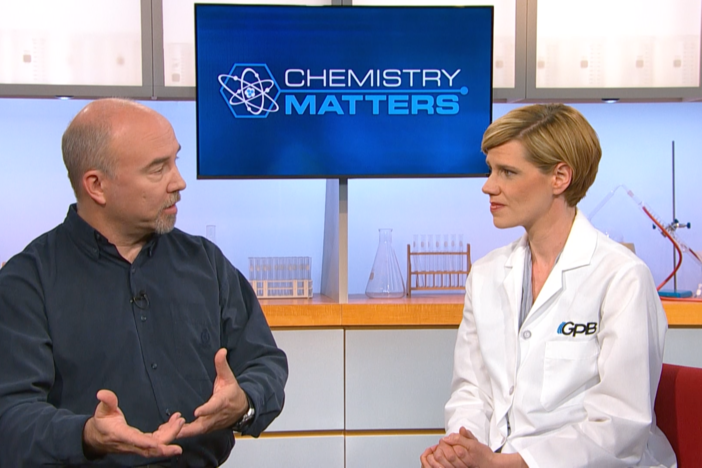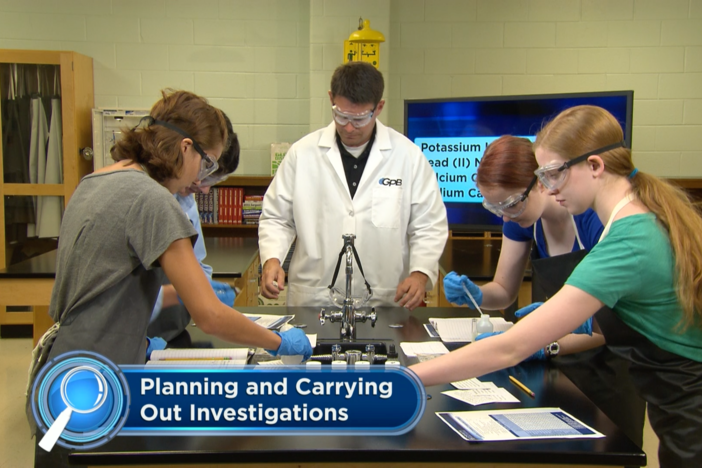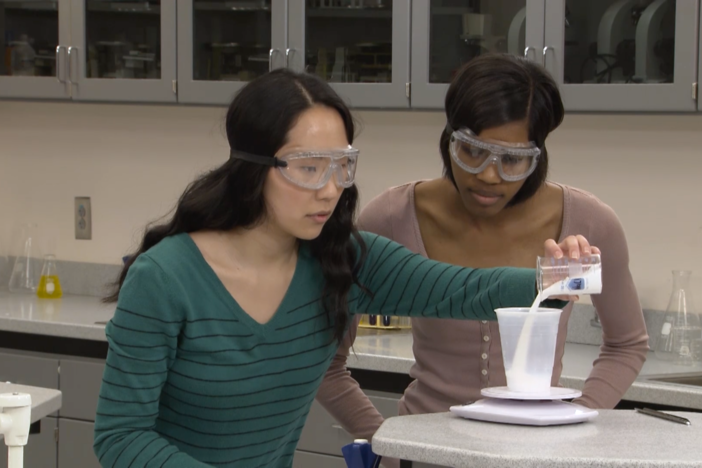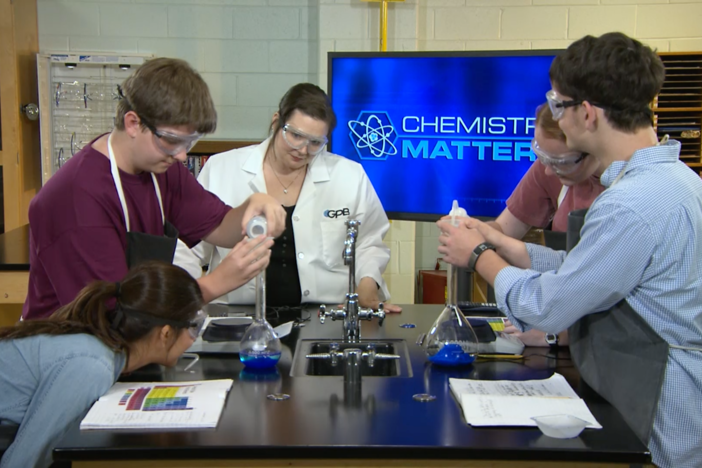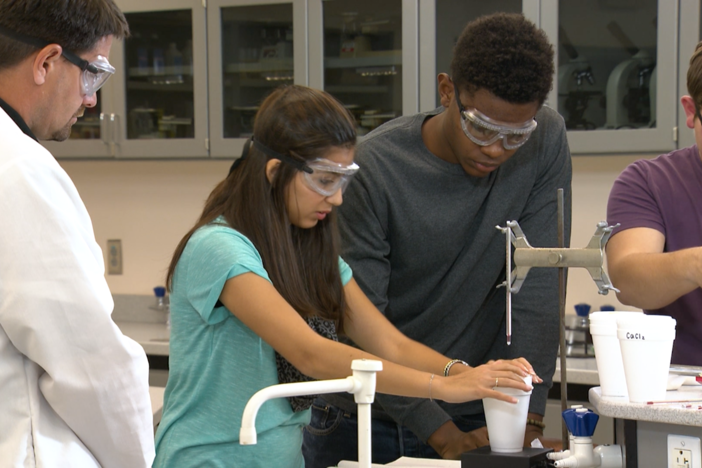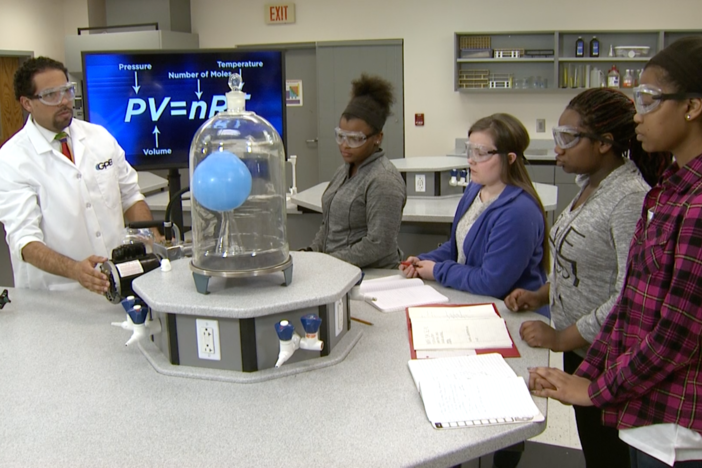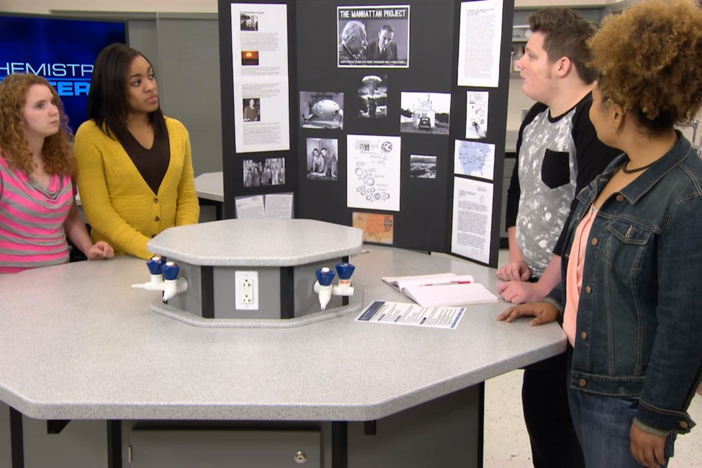Segment K: Nuclear Chemistry Review
This segment recaps the Unit 11, "Nuclear Chemistry," in which students learned about radioactivity, including alpha and beta radiation and gamma rays. They were introduced to nuclear fission and fusion and the energy each can produce. We also visited a Georgia Power nuclear chemistry lab, which measures radiation in the environment.
Segment K: Nuclear Chemistry Review
This segment recaps the Unit 11, "Nuclear Chemistry," in which students learned about radioactivity, including alpha and beta radiation and gamma rays. They were introduced to nuclear fission and fusion and the energy each can produce. We also visited a Georgia Power nuclear chemistry lab, which measures radiation in the environment.
Science
Obtain, evaluate, and communicate information about the use of the modern atomic theory and periodic law to explain the characteristics of atoms and elements.
Construct an explanation based on scientific evidence of the production of elements heavier than hydrogen by nuclear fusion.
Obtain, evaluate, and communicate information to explain the changes in nuclear structure as a result of fission, fusion and radioactive decay.
Develop a model that illustrates how the nucleus changes as a result of fission and fusion.
Use mathematics and computational thinking to explain the process of half-life as it relates to radioactive decay.
Construct arguments based on evidence about the applications, benefits, and problems of nuclear energy as an alternative energy source.
The Chemistry Matters teacher toolkit provides instructions and answer keys for labs, experiments, and assignments for all 12 units of study. GPB offers the teacher toolkit at no cost to Georgia educators. Complete and submit this form to request the teacher toolkit. You only need to submit this form one time to get materials for all 12 units of study.
